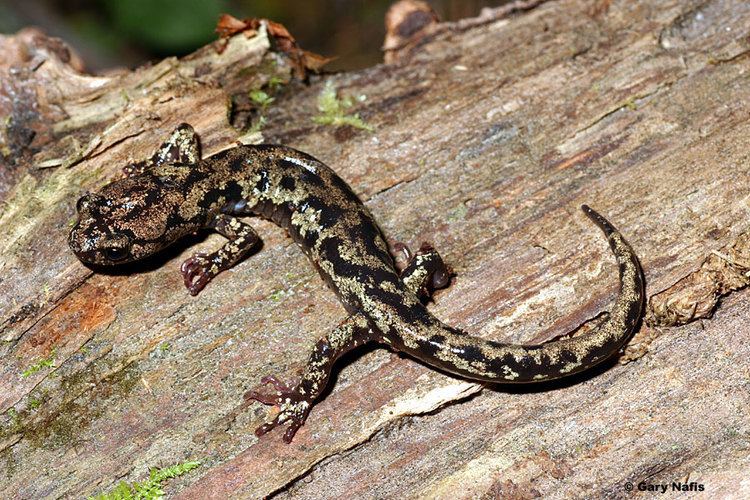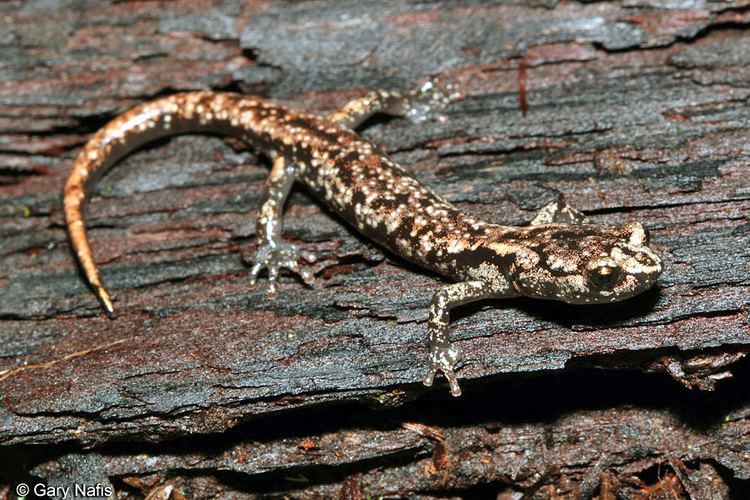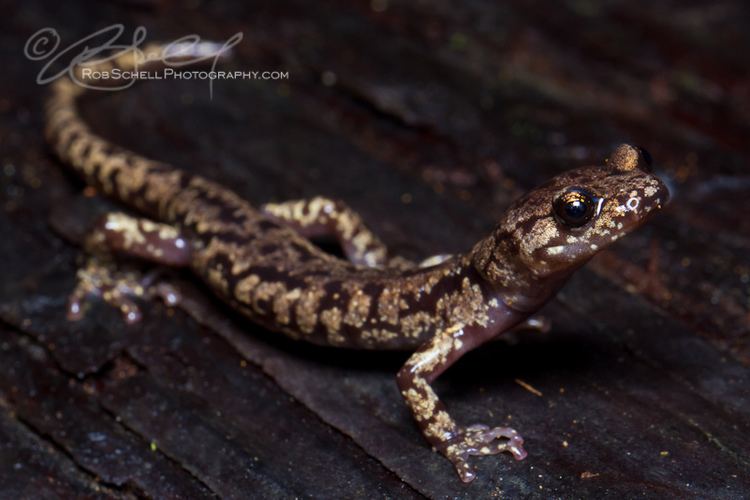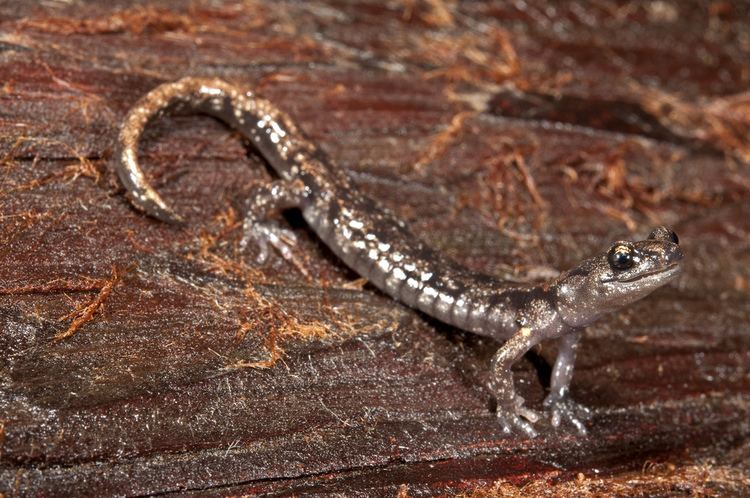Genus Aneides Phylum Chordata Rank Species | Family Plethodontidae Scientific name Aneides vagrans Order Salamander | |
 | ||
Similar Salamander, Climbing salamander, Clouded salamander, Black salamander, Coastal giant salamander | ||
Noah performs original composition the wandering salamander
The wandering salamander (Aneides vagrans) is a species of salamander in the family Plethodontidae. It is found in Canada and the United States. Its natural habitat is temperate forests. It is threatened by habitat loss.
Contents
- Noah performs original composition the wandering salamander
- Description
- Distribution and habitat
- Biology
- Status
- References

Description

The wandering salamander is very similar in appearance to the clouded salamander (Aneides ferreus) and was at one time considered to be the same species. It is long and slender and grows to a snout to vent length of 3 inches (76 mm) and a total length of 5 inches (130 mm). The head is broader in males than in females. Between the nostrils and the mouth it has a pair of naso-labial grooves which are involved in chemoreception and it has sixteen costal grooves on either side of the body. The legs are relatively long and the toes have expanded terminal pads with square cut ends. The tail is prehensile and is round in cross section and used when the salamander clambers around among the branches of trees. The back varies in colour from brown to light grey, mottled or marbled and speckled with bronze flecks. It sometimes has a greenish sheen. The juveniles have a bronze stripe down the spine.
Distribution and habitat

The clouded salamander has traditionally been thought to have a range that extended from northern California through Oregon and north to Vancouver Island, but it is absent from the state of Washington. In 1998, Jackson examined the mitochondrial DNA and allozymes of populations from various parts of the range and determined that those from California and Vancouver Island were similar but were distinct from the populations found in Oregon. He named the species from the two extremities as Aneides vagrans, the wandering salamander, while retaining the name Aneides ferreus for the Oregon population. It seems likely that A. vagrans arrived in Vancouver Island during the nineteenth century as the result of the import of large sheets of tan oak bark from California for the tanning industry. In the next century the salamander spread to nearly all the small offshore islets round Vancouver Island, probably on rafts of logs.

In California it inhabits a narrow coastal strip of forested land with redwood, Douglas fir, cedar and alder. It prefers clearings or forest edges and may be abundant in recently cleared areas with tree stumps, fallen trees and woody debris. In Vancouver Island it is more widely distributed. It occurs from sea level to 1,700 metres (5,600 ft).
Biology

The wandering salamander climbs up to forty metres (yards) in the branches of trees. It feeds at night on small invertebrates such as ants, mites, adult beetles and their larvae, snails, springtails and woodlice. During the day it hides under fallen trees, under rocks, in crevices, under bark and in rotten wood. It has no lungs or gills, and breathes through its skin. For this reason it must keep moist at all times. In California it may aestivate in summer and be active in winter while in Vancouver Island it may be active in summer and hibernate in winter.

Breeding takes place in spring and early summer. The female lays a clutch of six to nine eggs in some concealed location such as under bark. She guards them as they develop and they eventually hatch directly into miniature adult salamanders with no aquatic larval stage.
Status
The wandering salamander is listed as "Near threatened" in the IUCN Red List of Threatened Species. This is because numbers seem to be declining and its habitat is threatened by changes in logging practices whereby there is less cut forest with large amounts of woody debris.
